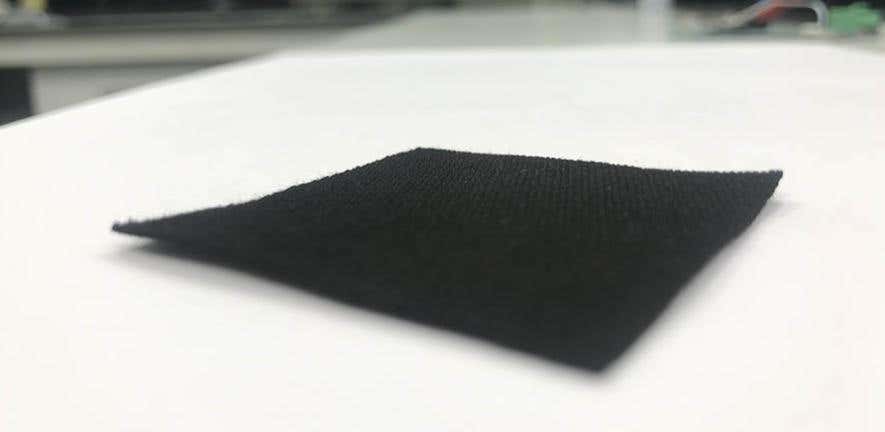Electrified charcoal sucks CO2 straight out of the air
Researchers pioneered a novel method of capturing carbon dioxide (CO2) directly from the air using activated charcoal.

In a groundbreaking study, researchers from the University of Cambridge have pioneered a novel method of capturing carbon dioxide (CO2) directly from the air using activated charcoal. This charcoal, commonly found in household water filters, was modified to act like a battery, allowing it to trap CO2 efficiently.
At the heart of this innovation lies the concept of charging activated charcoal with ions that form reversible bonds with CO2. This method, detailed in the journal Nature, not only proves to be effective in capturing CO2 but also offers a potential leap in energy efficiency compared to current carbon capture technologies.
"Capturing carbon emissions from the atmosphere is a last resort, but given the scale of the climate emergency, it’s something we need to investigate," said Dr. Alexander Forse from the Yusuf Hamied Department of Chemistry, who spearheaded the research. "The first and most urgent thing we’ve got to do is reduce carbon emissions worldwide, but greenhouse gas removal is also thought to be necessary to achieve net zero emissions and limit the worst effects of climate change. Realistically, we’ve got to do everything we can."
The Challenge of Direct Air Capture
Direct air capture (DAC) is an approach where materials, often resembling sponges, absorb CO2 directly from the atmosphere. However, existing DAC methods are fraught with challenges—they are costly, require high temperatures, and depend on natural gas, which itself is a fossil fuel.
"Some promising work has been done on using porous materials for carbon capture from the atmosphere," said Forse. "We wanted to see if activated charcoal might be an option, since it’s cheap, stable and made at scale."
Activated charcoal, known for its use in filtration systems, traditionally doesn’t capture CO2 from the air effectively. But the Cambridge team hypothesized that by "charging" the charcoal, it could become a viable candidate for carbon capture.
In a typical battery, ions move into an electrode during charging. The researchers adapted this concept, charging activated charcoal with hydroxide ions—a type of charged chemical compound. These ions are known for forming reversible bonds with CO2, making them ideal for capturing carbon.
Related Stories
The process begins with an activated charcoal cloth, which acts like a battery electrode. During charging, hydroxide ions fill the tiny pores within the charcoal. After charging, the charcoal is removed, cleaned, and dried. The result is a charged charcoal sponge capable of capturing CO2 directly from the air.
“It’s a new way to make materials, using a battery-like process,” explained Forse. “And the rates of CO2 capture are already comparable to incumbent materials. But what’s even more promising is this method could be far less energy-intensive, since we don’t require high temperatures to collect the CO2 and regenerate the charcoal sponge.”
Energy Efficiency: A Key Advantage
To release the CO2 for storage or further use, the charged charcoal is heated, breaking the bonds between the hydroxides and CO2. Traditional CO2 capture materials need to be heated to extreme temperatures, sometimes up to 900°C, which often involves burning natural gas. In contrast, the Cambridge team’s charged charcoal only needs to be heated to 90-100°C. This lower temperature can be easily achieved with renewable electricity.
The materials are heated through resistive heating, a process where the material heats from the inside out, making it quicker and less energy-intensive. This efficiency is a significant advantage over existing methods, which are energy-heavy and less sustainable.
Future Prospects and Challenges
Despite its promise, the new method has its limitations. The current capacity of CO2 capture needs enhancement, especially under humid conditions where the performance drops. "We are working now to increase the quantity of carbon dioxide that can be captured, and in particular under humid conditions where our performance decreases," Forse noted.
Moreover, the potential applications of this approach extend beyond carbon capture. The pores in the charcoal and the inserted ions can be adjusted to capture various molecules, making the method versatile for different uses.
“This approach was a kind of crazy idea we came up with during the Covid-19 lockdowns, so it’s always exciting when these ideas actually work,” Forse added. “This approach opens a door to making all kinds of materials for different applications, in a way that’s simple and energy-efficient.”
Recognizing the commercial potential of this discovery, a patent has been filed. The research is being supported by Cambridge Enterprise, the University’s commercialization arm, to bring this technology to market.
As the world grapples with the urgent need to mitigate climate change, innovations like this offer a glimmer of hope. By making carbon capture more efficient and affordable, we take a step closer to a future where we can effectively manage and reduce atmospheric CO2, striving towards the goal of net-zero emissions.
For more science and technology stories check out our New Innovations section at The Brighter Side of News.
Note: Materials provided above by The Brighter Side of News. Content may be edited for style and length.
Like these kind of feel good stories? Get the Brighter Side of News' newsletter.



